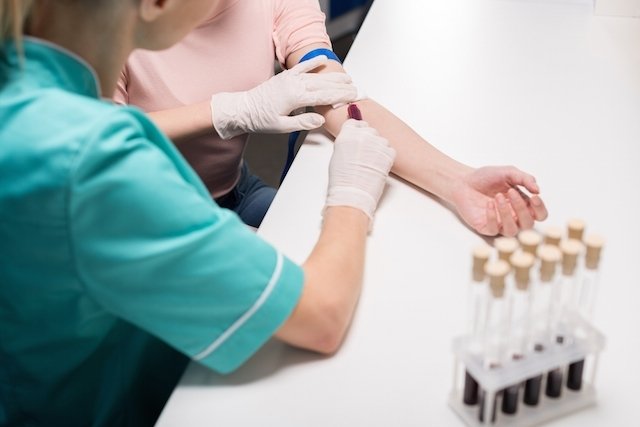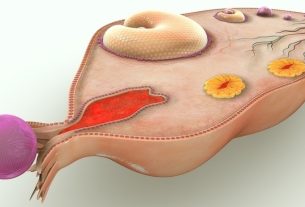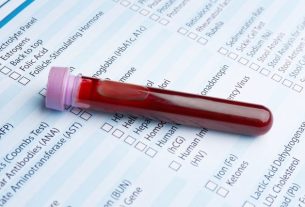Homocysteine is an amino acid that is related to the emergence of cardiovascular diseases such as stroke, coronary disease, thrombosis or heart attack, for example, as its high levels can cause changes in blood vessels.
Normally, the cardiologist or general practitioner can order a homocysteine test to observe the amount of this amino acid in the blood, assessing the need to start treatment to prevent the cardiovascular problems mentioned above, if the value is high.
Normal homocysteine values in blood tests must be below 15 µmol/L, although this value may vary slightly depending on the laboratory that analyzes it, and the test must be carried out fasting for up to 12 hours or according to the recommendation of the doctor.

When the exam is indicated
The homocysteine test is normally recommended by the doctor with the aim of investigating the risk of cardiovascular diseases, since the increased amount of this amino acid in the circulation is related to a greater risk of heart attack, thrombosis and stroke, for example.
Furthermore, homocysteine measurement can be useful for monitoring thyroid-related problems, as changes in circulating levels of this amino acid can be noted, as well as kidney diseases. Therefore, it is important that the result of the homocysteine test is evaluated by the doctor together with the results of other blood tests that may have been requested.
Reference values
Normal reference values may vary between laboratories, however, normally the amount of homocysteine in the blood is considered normal when it is between 5 e 15 µmol/L. Values above this normally represent a greater cardiovascular risk, since homocysteine can lead to changes in blood vessels and favor platelet aggregation, leading to thrombus formation.
Do you have questions about your exam results?
- Low risk cardiovascular disease: between 15 and 30 µmol/L;
- Intermediate risk cardiovascular disease: between 30 and 100 µmol/L;
- High risk of cardiovascular disease: greater than 100 µmol/L.
According to the concentration of homocysteine in the blood, the doctor can indicate the best form of treatment. Values below the reference value must also be treated, as this can result in failure of the immune system and the fight against oxidative stress, which can lead to cell death and toxic effects on the body.
Some medications can interfere with the test results, increasing homocysteine levels in the blood. Therefore, it is important to inform the laboratory if you are taking any medication so that it can be taken into account at the time of analysis.
How to understand the result
The homocysteine result must be evaluated by the doctor taking into account the results of other blood tests, as well as the person’s health history.
1. Low homocysteine
Low homocysteine is when a homocysteine concentration is lower than 5 µmol/L, which can happen mainly due to supplementation with vitamin B or folic acid, especially during pregnancy, as these substances reduce the concentration of homocysteine in the blood.
Normally values slightly below the reference value are not worrying, however when the concentration of homocysteine is very low it can result in damage to the body, as there is a decrease in the production of antioxidants, causing toxic substances to accumulate in the body.
When the homocysteine level is very low and for no apparent reason, it is recommended to consult a general practitioner to assess the problem, as it may be a sign of low production of this amino acid.
What to do: When the cause of the decrease in homocysteine is known, such as vitamin B or folic acid supplementation, for example, the doctor usually recommends interrupting or changing the dosage of the supplementation until the homocysteine concentration returns to normal.
In other situations, a change in diet may be recommended, in order to consume less foods rich in vitamin B6 and B12, such as fish, bananas, avocados and vegetables, and in folate, such as beans, spinach and lentils, for example.
2. High homocysteine
High homocysteine is considered when the concentration of this amino acid in the blood is greater than 15 µmol/L, which can happen as a result of a diet rich in proteins, especially red meat, as these foods are rich in this amino acid, which can cause injuries in the walls of blood vessels, leading to the emergence of cardiovascular diseases.
Additionally, homocysteine may be increased due to:
- Genetic changes that can interfere with homocysteine metabolism, such as methylene mutation;
- Low intake of foods with vitamin B6, B12 or folic acid;
- Thyroid changes;
- Kidney disease;
- Use of some medicines;
- Smoking;
- SARS-CoV-2 infection, in the most serious cases.
Whenever an increase in homocysteine levels is observed, it is important to consult a doctor, as increased levels of this amino acid are related to a greater risk of thrombosis, which can put life at risk. This happens because increased homocysteine can act directly on blood vessels and activate platelets and clotting factors, resulting in thrombus.
Therefore, to assess the risk of thrombosis, the doctor normally requests, in addition to measuring homocysteine in the blood, measuring coagulation factors, platelet levels, and d-dimer, in addition to investigating the methylene mutation, measuring vitamins and thyroid hormones to investigate the cause of the increase in homocysteine.
How to lower homocysteine
Treatment to lower homocysteine must be indicated by the doctor in conjunction with the nutritionist, as this makes it possible to define the best strategy to reduce the levels of this amino acid in the blood according to its cause.
Therefore, it may be recommended to make changes to the diet, such as increasing the consumption of foods rich in folic acid and vitamins B6 and B12, such as beans, broccoli, spinach, nuts, bananas and grilled fish, for example, in addition to being recommended to avoid the consumption of red meat and seafood.
It is important that these foods are consumed according to the nutritionist’s recommendation, because if large quantities are consumed, the concentration of homocysteine in the blood can increase, also representing an increased risk of complications, mainly related to the cardiovascular system.
In some cases, when food is not enough to lower homocysteine, the doctor may also prescribe the use of dietary supplements with folic acid, vitamin B12, taurine or betaine to help reduce the amount of homocysteine in the blood.

Sign up for our newsletter and stay up to date with exclusive news
that can transform your routine!
Warning: Undefined array key "title" in /home/storelat/public_html/wp-content/plugins/link-whisper-premium/templates/frontend/related-posts.php on line 12
Warning: Undefined array key "title_tag" in /home/storelat/public_html/wp-content/plugins/link-whisper-premium/templates/frontend/related-posts.php on line 13



